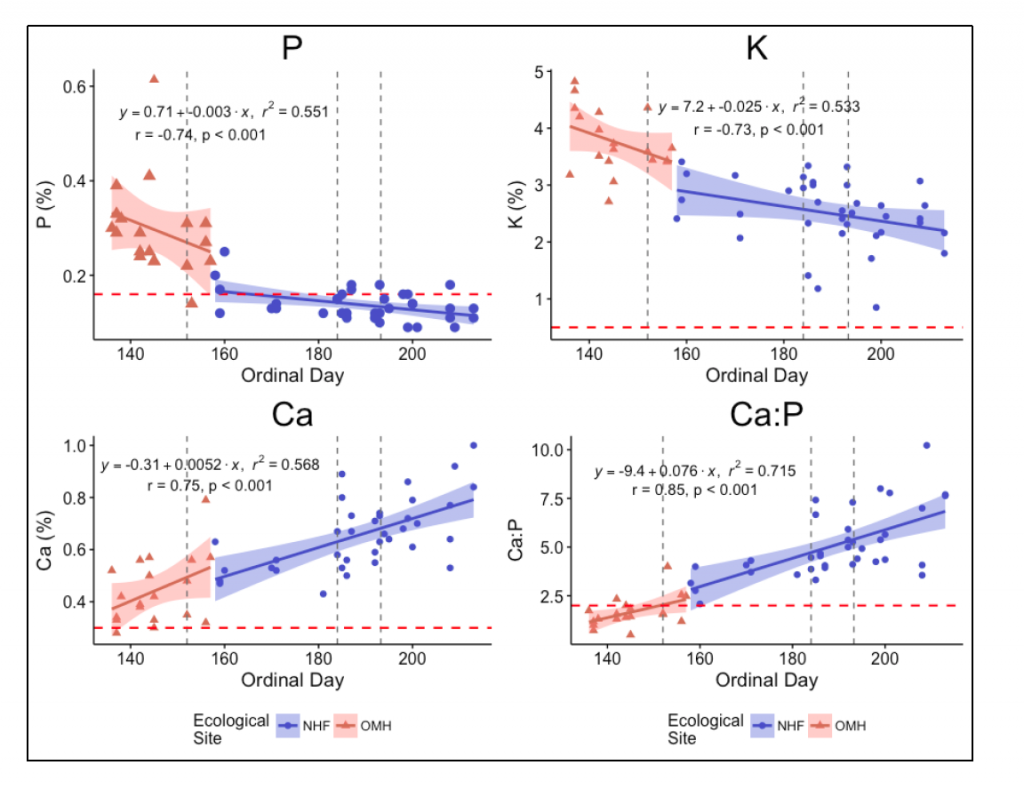You are what you eat – and deer depend on the quality of the plants they consume to survive, grow, and reproduce.
One of the more difficult tasks in the Deer-Forest Study is collecting soil and vegetation data. You read that correctly. Don’t get me wrong, trapping deer is no picnic but sampling soils comes with its own set of challenges.
Hiking to randomly selected locations regardless of terrain, hauling pounds of sampling gear in, then pounds of soil samples plus gear out makes for a lot of hard work.
One of the graduate students on The Deer-Forest Study, Nico Navarro, studied both the soil properties on our study areas and forage nutrient content. He found lots of interesting relationships. One I found particularly intriguing was the calcium (Ca) to phosphorus (P) ratio (CA:P).
The ratio of Ca and P in plants has implications for ungulates. The ideal ratio is 1.5-2.0:1. If there is excessive P then uptake of Ca in the digestive system reduced and the animal will metabolize calcium and phosphorus from its skeleton.
In spring, forbs are the LGS (little green stuff) on the forest floor and comprise 36-75% of a deer’s diet. Canada mayflower (Maianthemum canadense) alone might be as much as 25% of the diet.
Nico found that the Ca:P ratio in Canada mayflower (and some other forbs) changes over time.
The ratio in early spring is ideal – 2:1 – but P declines over time such that by late summer, the ratio can be as high as 7.5 to 1.

Do you know what deer are doing in spring and early summer? Growing antlers and pumping out gallons of milk. Both of which require increased amounts of calcium and phosphorus.
If you have a good memory, you may recall that antlers don’t actually calcify until mid-July after those ideal ratios. So how can bucks take advantage of this ideal ratio for antler growth? They put it in the bank. Increased absorption efficiency allows for the incorporation of Ca and P into the skeleton for later transport to the antlers!
There is no bank for females. Over 30% of their P and 15% of their Ca budgets go straight to milk production. And while that 2:1 ratio is ideal, as long as each of those minerals are at sufficient levels performance (lactation and growth) are not affected between 0.6:1 to 6:1.
Fascinating how plants and animals have evolved to capitalize on the ideal ratio in early spring just as lactation demands in females are at their highest – and antler growth is rapid.
More interconnectedness and complexity – it is a system with many pieces. Thinking that humans know everything about how to manipulate it for their own benefit may be a bit of an overreach.
-Duane Diefenbach
